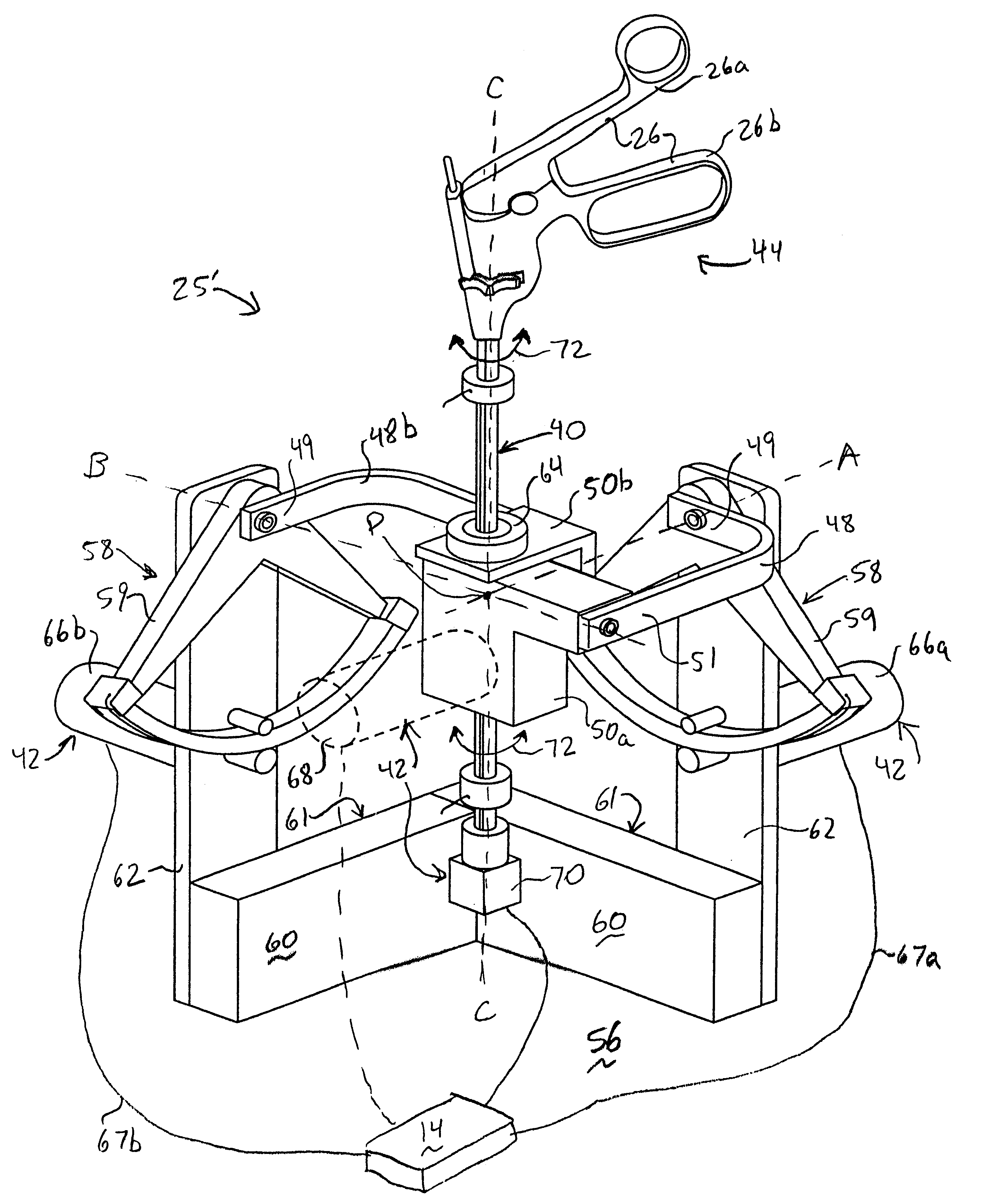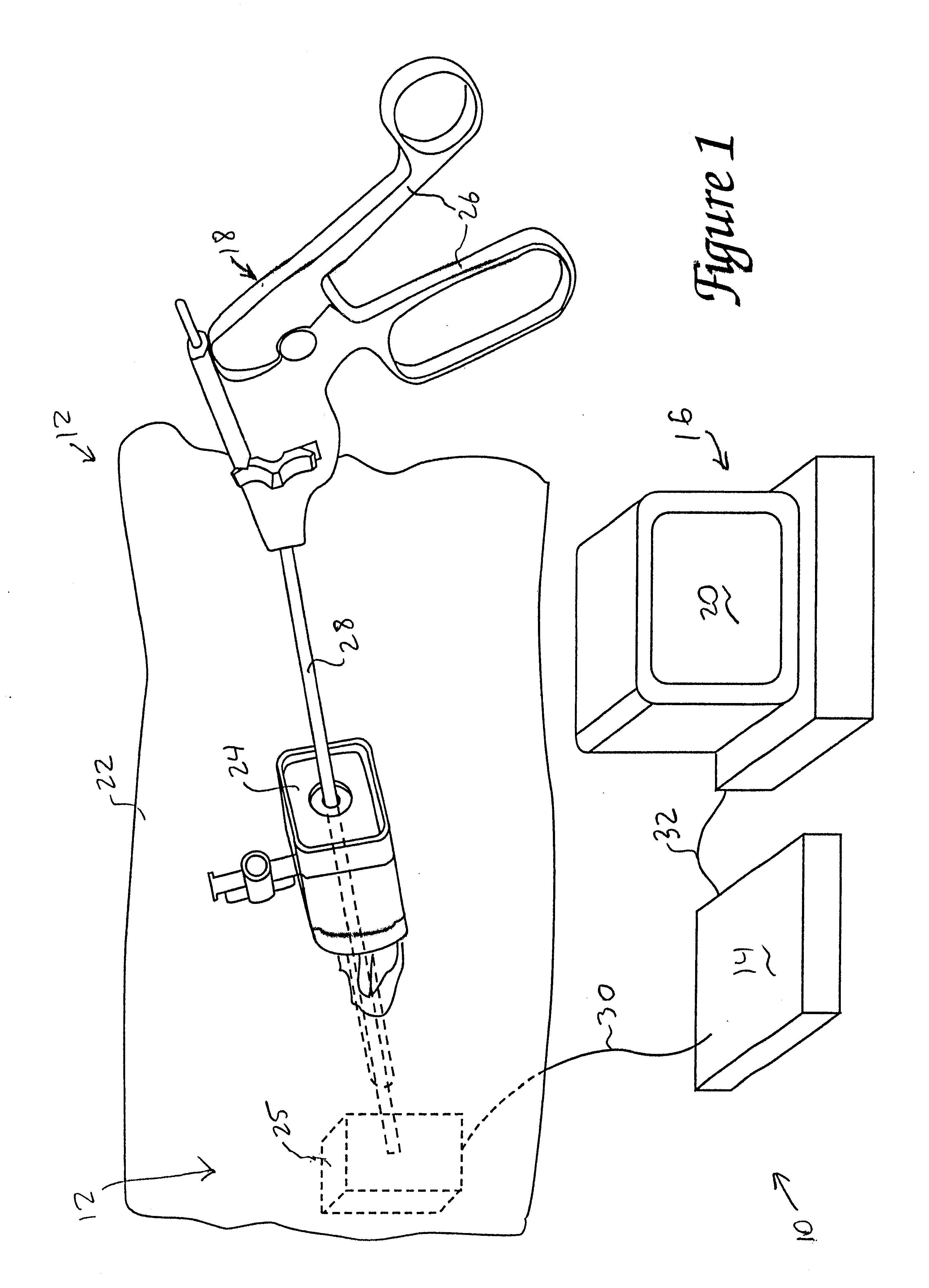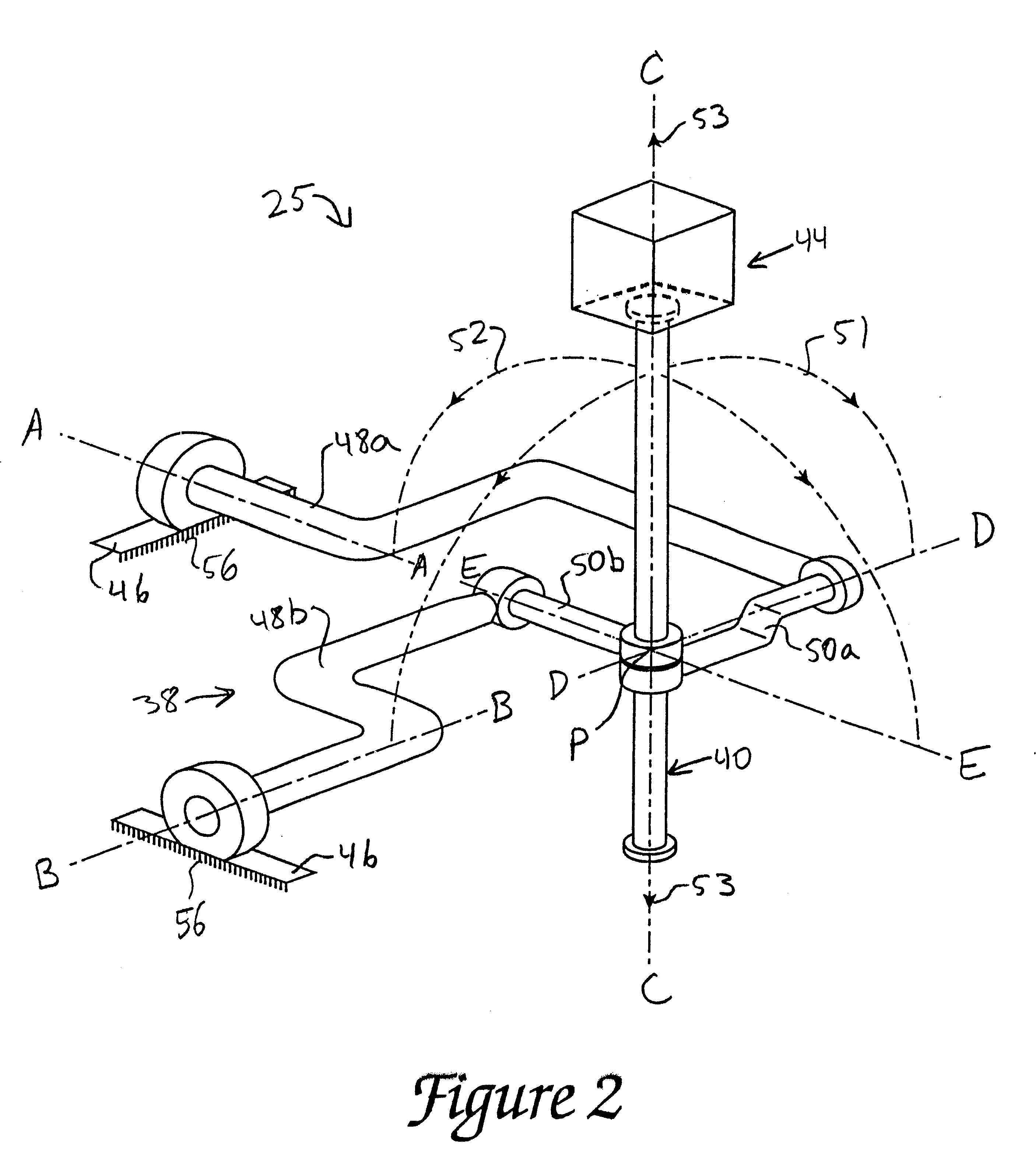Passive force feedback for computer interface devices
a computer interface and computer input technology, applied in the field of interface devices, can solve the problems of inability to allow a user to experience an entire sensory dimension in virtual reality simulations, inability to interfacing with 3-dimensional virtual reality simulations, and awkwardness of 2-dimensional input devices, etc., to achieve high-reality force feedback, reduce power consumption, and slow control signals
- Summary
- Abstract
- Description
- Claims
- Application Information
AI Technical Summary
Benefits of technology
Problems solved by technology
Method used
Image
Examples
Embodiment Construction
In FIG. 1, a virtual reality system 10 used to simulate a medical procedure includes a human / computer interface apparatus 12, an electronic interface 14, and a computer 16. The illustrated virtual reality system 10 is directed to a virtual reality simulation of a laparoscopic surgery procedure. The software of the simulation is not a part of this invention and thus will not be discussed in any detail. However, such software is commercially available as, for example, Teleos™ from High Techsplanations of Rockville, Md. Suitable software drivers which interface such simulation software with computer input / output (I / O) devices are available from Immersion Human Interface Corporation of Santa Clara, Calif.
The handle 26 of a laparoscopic tool 18 used in conjunction with the present invention is manipulated by an operator and virtual reality images are displayed on a screen 20 of the digital processing system in response to such manipulations. Preferably, the digital processing system is a...
PUM
 Login to View More
Login to View More Abstract
Description
Claims
Application Information
 Login to View More
Login to View More - R&D
- Intellectual Property
- Life Sciences
- Materials
- Tech Scout
- Unparalleled Data Quality
- Higher Quality Content
- 60% Fewer Hallucinations
Browse by: Latest US Patents, China's latest patents, Technical Efficacy Thesaurus, Application Domain, Technology Topic, Popular Technical Reports.
© 2025 PatSnap. All rights reserved.Legal|Privacy policy|Modern Slavery Act Transparency Statement|Sitemap|About US| Contact US: help@patsnap.com



